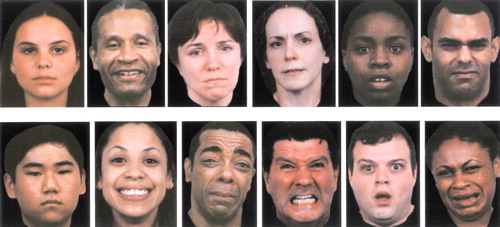For Schizophrenia Patients, Faces Are a Difficult Read
Welcome to the art of face reading—the ability to interpret emotions in other people’s faces correctly. It’s probably harder than most people think. They tend to make correct interpretations only 71 percent of the time.
 But for individuals with schizophrenia, correctly interpreting emotions in other people’s faces is even more challenging. They tend to get the emotions right only 64 percent of the time—a highly significant difference statistically.
But for individuals with schizophrenia, correctly interpreting emotions in other people’s faces is even more challenging. They tend to get the emotions right only 64 percent of the time—a highly significant difference statistically.
What’s more, persons with schizophrenia are especially likely to err when faces express fear or disgust or are emotionally neutral. Interestingly, however, they tend to do just as well as persons without mental illness in recognizing happy, sad, or angry expressions.
These revelations come from a study conducted by Christian Kohler, M.D., clinical director of neuropsychiatry at the University of Pennsylvania, and coworkers; the results of their study appeared in the October American Journal of Psychiatry.
The study included 61 persons without mental illness and 28 persons with stable schizophrenia. The subjects competed with each other on an emotion-recognition test that Kohler and his team developed. The test included 96 computer-based, three-dimensional color faces expressing any of five emotions—happiness, sadness, anger, fear, or disgust—or neutrality. The emotions expressed were designed to be either mild or intense. Half of the faces were male, half were female. Fifty-nine of the faces were Caucasian, and 37 were non-Caucasian.
Kohler and his colleagues believe that their findings have practical implications for persons with schizophrenia and for those who care for them. For instance, both mentally healthy and schizophrenia subjects were found to interpret emotions better when they were displayed more intensely. The schizophrenia subjects, however, benefited less from emotions that were intensely displayed than the other subjects did. Thus, exaggerating one’s facial expressions may not help an individual with schizophrenia correctly interpret the meaning of those expressions.
The researchers also pointed out that one of their findings—that schizophrenia subjects tend to be as good at recognizing angry faces as subjects without mental illness—surprised them. The reason? They expected that schizophrenia patients, who are often prone to paranoid thinking, and hostility would also be likely to misinterpret anger.
The study was financed by the National Institute of Mental Health.
The study, “Facial Emotion Recognition in Schizophrenia: Intensity Effects and Error Pattern,” is posted on the Web at http://ajp.psychiatryonline.org/cgi/content/full/160/10/1768. ▪
Am J Psychiatry 2003 160 1768



